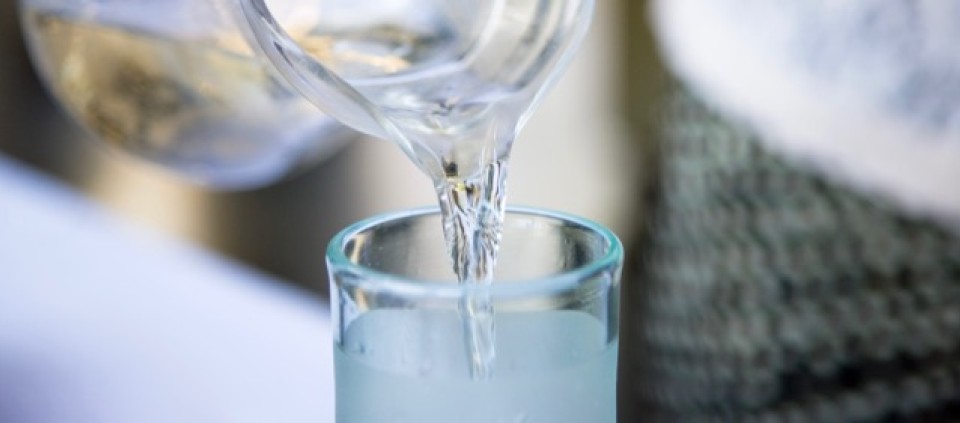Healthy Hydration: The Science and Spirit of Water

The sage who wants to change the world must look towards the water. When water is uncontaminated, men's hearts are upright. When water is pure, the people’s hearts are at ease.
—Chuang-Tzu, The Zhuangzi (4th century BC)
Water is the medium for life. Essential to digestion, circulation, and every bodily function, it comprises about 70 percent of the human body, and covers a similar proportion of the surface of our planet—and is similarly critical to its survival. Life will cease if you don’t drink water for several days; no other nutrient is quite that essential. Because so many factors (environment, weather, food intake, and your metabolic rate) influence hydration needs, they are highly individual. So, standard recommendations are loose guidelines to a greater degree than for other nutrients.
Water figures prominently in every spiritual tradition, including yoga. According to Chuang-Tzu, the Chinese Taoist philosopher quoted above, clean and plentiful water supports a happy, healthy society. Yoga’s and Ayurveda’s reverence for water as an essential element, offering the qualities of fluidity, weight, softness, and coolness, are in keeping with these spiritual perspectives. Water is the master cleanser of body and soul, and is often used as a blessing and a purifying element in spiritual practices, from baptism to bathing initiations. We know that water is essential—yet, perhaps because it is a clear, fluid medium, it is easy to overlook. Out of sight, out of mind. So dehydration is a common health issue, particularly in warmer months and warmer climates.
How Much Water Do You Need?
How much water is enough? Most people can meet their hydration needs by letting thirst be their guide. If you know, however, that your thirst-o-meter is off—if you forget to drink or don’t like to drink water through the day—then drinking by the clock is the way to go. You can overdo water, so if you know you need to mind your hydration, indiscriminate chugging may not be your solution. Rather, get a sense of what you need, and map that out until it is second nature.
To drink by the clock, look at your recommended fluid needs, and map out how and when you’ll get them met throughout the day. Designate time checkpoints—say, half your water needs met by noon—and think about what will support you, such as carrying a water bottle or having a water glass always at the ready by your computer.
Recommendations from the Health and Medicine Division of the National Academies of Sciences, Engineering, and Medicine suggest that, to maintain hydration, women need about 90 ounces of water daily—that’s a little over 11 eight-ounce glasses. Men need about 124 ounces—15 and a half glasses. Roughly 80 percent of the total water we take in is from drinking water and other beverages, and the other 20 percent comes from food.
How to Recognize When You're Not Getting Enough
For active people, the early signs of dehydration (thirst, dry mouth, and low energy) can develop quickly into more serious warnings, including
- Muscle cramps
- Headache or irritability
- Nausea
- Dark urine; decreased volume of urine
- Impaired performance (stumbling, unable to think of a word or speak well, compromised ability to do things like use your computer or phone).
If you’re experiencing any of these issues and rehydrating with water doesn’t correct it, seek medical attention.
Tips for Staying Hydrated
Ayurveda recommends that we sip water rather than guzzle it a glass at a time, and that approach makes sense for enhanced fluid absorption. Certainly, eating more slowly enhances digestion for a variety of reasons, including that it’s more relaxing.
A recent study suggests that hot yoga teachers who remind their students to hydrate had students with fewer dangerous symptoms of dehydration after class. If you enjoy hot yoga, but wonder if you are hydrating adequately, you probably aren’t. You can, however, do a test of your “sweat rate,”which provides an individualized estimate of your fluid replacement needs.
Here’s a quick way to assess your hot yoga sweat rate: Before your next hot yoga class, weigh yourself (naked is best). Right after class and before drinking water, weigh yourself again. A pound is equivalent to 16 ounces of fluid. The difference is your sweat rate. (The full calculation also takes into account fluid intake during the event, and urine output: sweating rate equals pre-exercise body weight, minus post-exercise body weight, plus fluid intake, minus urine volume, divided by exercise time in hours.)
For most of us, water is the best fluid for hydration. Oral rehydration solutions (ORS)—fluids that contain a little salt and a little sugar—can hydrate you faster than plain water. Some research claims that coconut water works better than plain water, though other studies refute that, but find that coconut water is easier to ingest in large amounts. Health-conscious athletes have been known to dilute fruit juice and add a pinch of salt to make their own ORS without the chemical load found in many commercial brands.
The habit of hydrating, particularly during warm weather, makes good sense not only to prevent dehydration but also for digestive health (it’s the first thing we bolster when someone reports constipation), weight management, and overall performance. As you hydrate, know you are not only maintaining your health, but also inviting in the cleansing spirit of water—the medium for life.
Boost your wellness quotient in a program with Annie B. Kay at Kripalu.
© Kripalu Center for Yoga & Health. All rights reserved. To request permission to reprint, please e-mail editor@kripalu.org.
Annie B. Kay, MS, RDN, E-RYT 500, C-IAYT, is an author, nutritionist, Kripalu faculty member, and important voice in whole-foods nutrition and yoga.
Full Bio and Programs